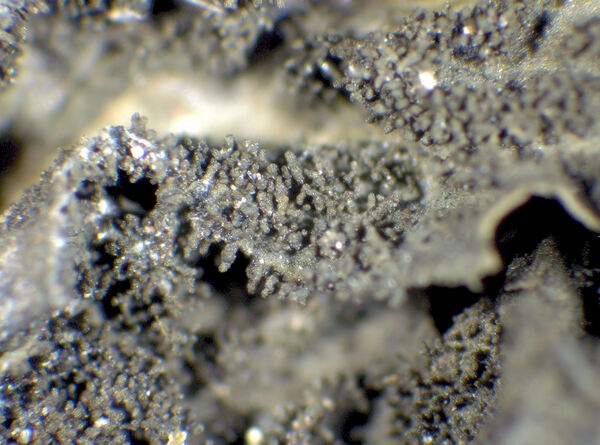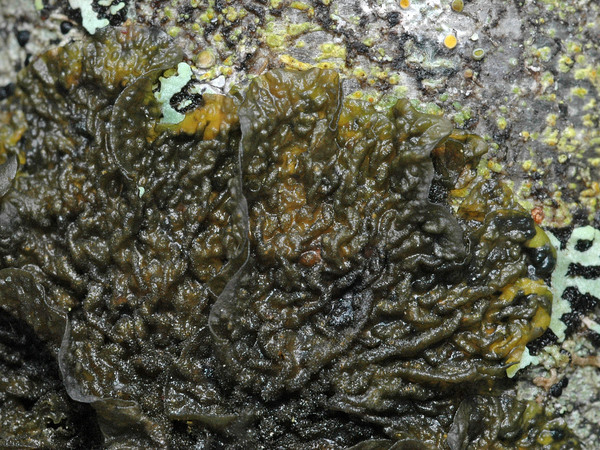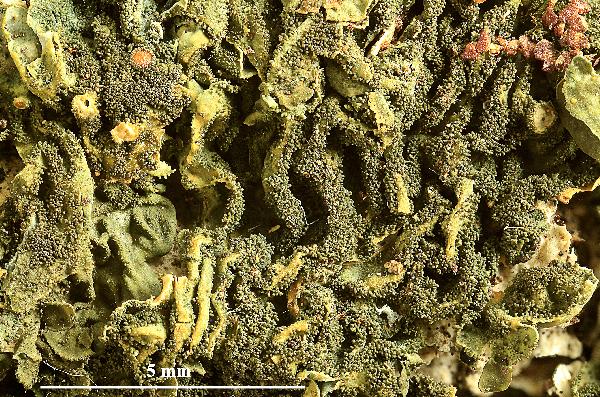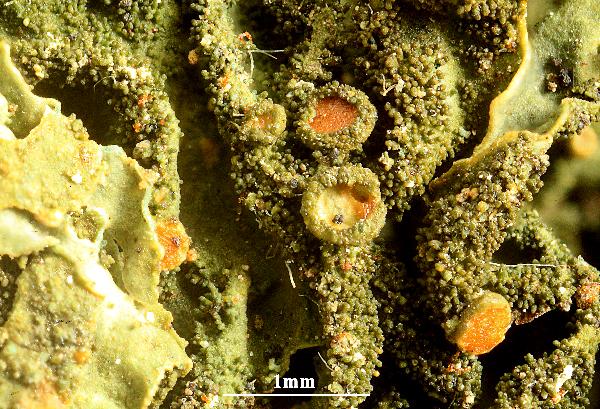Collema furfuraceum (Arnold) Du Rietz
Ark. Bot. K. Svenska Vetensk.-Akad., 22 A-3: 3, 1929.. Basionym: Synechoblastus nigrescens var. furfuraceum (Schaer.) Arnold - Flora, 64: 115, 1881
Synonyms: Collema furfuraceum Du Rietz; Collema nigrescens var. furfuraceum (Du Rietz) H. Olivier
Distribution: N - VG (Castello 1996), Ven (Caniglia & al. 1999, Nascimbene & Caniglia 2000), TAA, Lomb (Arosio & al. 2003), Emil (Fariselli & al. 2020), Lig (Valcuvia & al. 2000, Giordani & al. 2001, 2002, 2025, Brunialti & Giordani 2003, Giordani 2006, Giordani & Incerti 2008). C - Tosc (Loppi 1996, 1996b, Loppi & al. 1997, 1998, 2002c, Putortì & al. 1998, Putortì & Loppi 1999b, Paoli & Loppi 2001, Frati & al. 2006b, Brunialti & Frati 2010, Loppi & Nascimbene 2010, Brunialti & al. 2012b, Frati & Brunialti 2023), Marc (Nimis & Tretiach 1999, Frati & Brunialti 2006), Umb (Ravera 1998, Ravera & al. 2006), Laz (Ravera 2002, Massari & Ravera 2002¸Nimis & Tretiach 2004, Munzi & al. 2007, Ravera & Genovesi 2008, Zucconi & al. 2013), Abr (Recchia & al. 1993, Olivieri & Pacioni 1996, Olivieri & al. 1997, 1997b, Loppi & al. 1998d, 1999, Caporale & al. 2016, Gheza & al. 2021), Mol (Nimis & Tretiach 1999, Caporale & al. 2008, Caporale & Ravera 2020), Sar (Zedda 1995, 2002, 2002b, Loi & al. 2000, Rizzi & al. 2011, Cossu 2013, Di Nuzzo & al. 2022). S - Camp (Garofalo & al. 1999, 2010, Aprile & al. 2003, 2003b, Puntillo & al. 2000, Nimis & Tretiach 2004, Nascimbene & al. 2010b, Brunialti & al. 2013, Ravera & Brunialti 2013, Catalano & al. 2016), Pugl (Nimis & Tretiach 1999), Bas (Bartoli & Puntillo 1998, Potenza 2006, Brackel 2011, Cassola & al. 2025), Cal (Puntillo 1995, 1996, Puntillo & Puntillo 2004), Si (Ottonello & Salone 1994, Grillo & Cristaudo 1995, Grillo & al. 1996, Grillo 1998, Czeczuga & al. 1999, Grillo & Caniglia 2004, Ottonello & Puntillo 2009, Ottonello & al. 2011, Liistro & Cataldo 2011, Ravera & al. 2024).
Description: Thallus foliose, homoiomerous, subgelatinous when wet, membranous and closely adnate, broadly lobed, (2-)3-8(-10) cm across. Lobes 0.5-1 cm broad, (50-)60-105 µm thick, apically rounded, dark olive-green to brownish black, paler and subtransparent when wet, strongly ridged and often pustulate in young parts, covered in simple or branched, mostly terete, cylindrical (globular when young) isidioid outgrowths which are 0.05-0.15 mm wide and up to 0.3 mm long and mostly concentrated on the pustules/ridges. Lower surface dark olive-green to brownish black, paler than upper surface, with scattered white hapters. Upper and lower cortices absent. Apothecia rare, 0.5-1.5 mm across, with a brown disc and a densely pseudoisidiate thalline margin. Thalline exciple usually pseudocorticate; proper exciple euthy- to subparaplectenchymatous; epithecium brownish; hymenium colourless, 85-110 µm high; paraphyses coherent, simple or sparingly branched, 2-3 µm thick at mid-level, the apical cells swollen; hypothecium pale yellow. Asci 8-spored, cylindrical-clavate, the apex strongly thickened, the apical dome K/I+ pale blue, with a downwardly projecting K/I+ deep blue tubular structure. Ascospores 4-5-septate, hyaline, bacilliform to acicular, often curved, 40-80 x 3-6.5(-8) µm. Pycnidia common, globose, superficial centrally but immersed marginally, on both sides of thallus. Conidia bacilliform, somewhat swollen towards ends, 4-6 x c. 1 µm. Photobiont cyanobacterial (Nostoc, the cells in long chains). Spot tests: all negative. Chemistry: without lichen substances. Note: a mainly temperate, probably holarctic lichen found on bark of broad-leaved trees and on epiphytic mosses below the subalpine belt; more common in the past, presently confined to semi-natural, open stands, or to old plantations of Olea in areas with a mild-humid climate, mainly in Tyrrhenian Italy.
Growth form: Foliose, broad lobed
Substrata: bark
Photobiont: cyanobacteria, filamentous (e.g. Nostoc, Scytonema)
Reproductive strategy: mainly asexual, by isidia, or isidia-like structures (e.g. schizidia)
Most common in areas with a humid-warm climate (e.g. most of Tyrrenian Italy)
Commonnes-rarity: (info)
Alpine belt: absent
Subalpine belt: absent
Oromediterranean belt: absent
Montane belt: extremely rare
Submediterranean belt: extremely rare
Padanian area: absent
Humid submediterranean belt: very rare
Humid mediterranean belt: rather rare
Dry mediterranean belt: absent
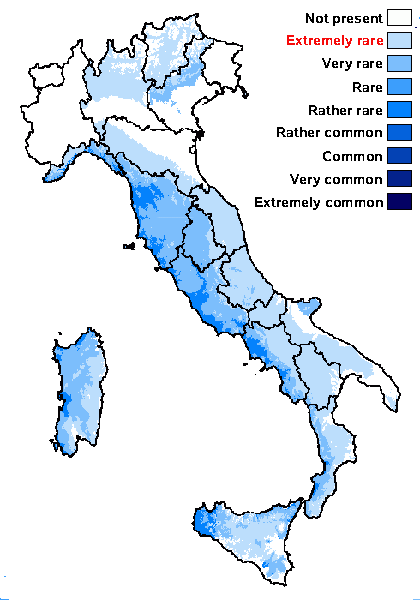
Predictive model
Herbarium samples
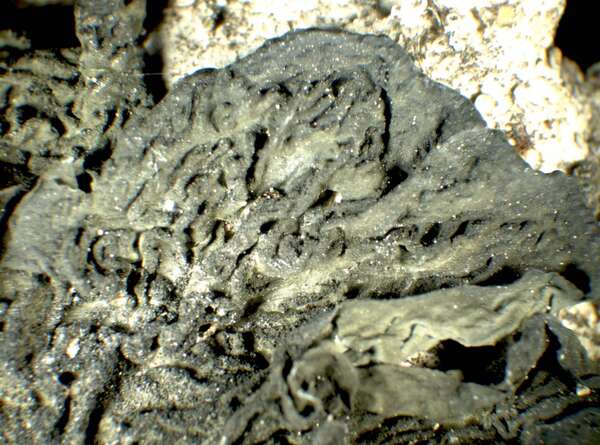

P.L. Nimis; Owner: Department of Life Sciences, University of Trieste
Herbarium: TSB (8842)
2001/12/04
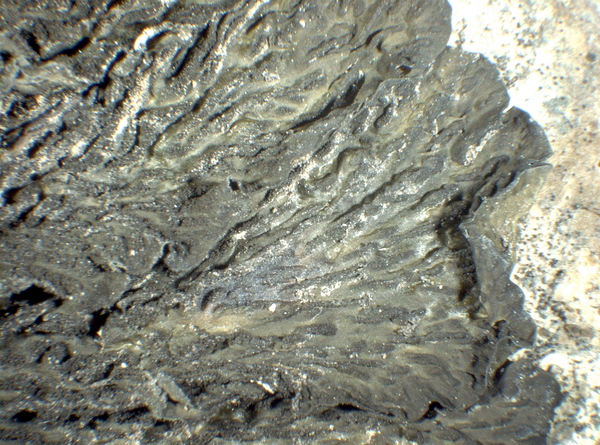

P.L.Nimis; Owner: Department of Life Sciences, University of Trieste
Herbarium: TSB (15168)
2008.03.06
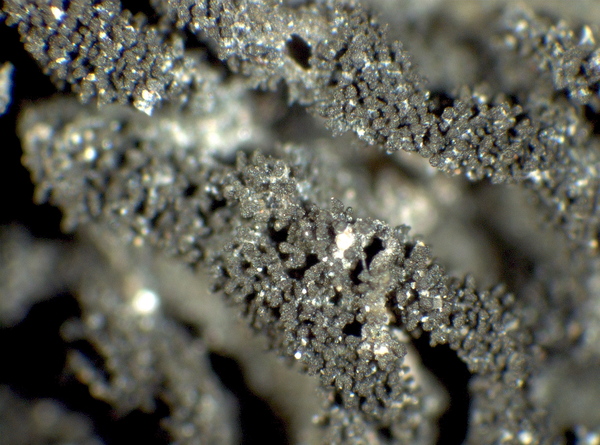

P.L.Nimis; Owner: Department of Life Sciences, University of Trieste
Herbarium: TSB (15168)
2008.03.06
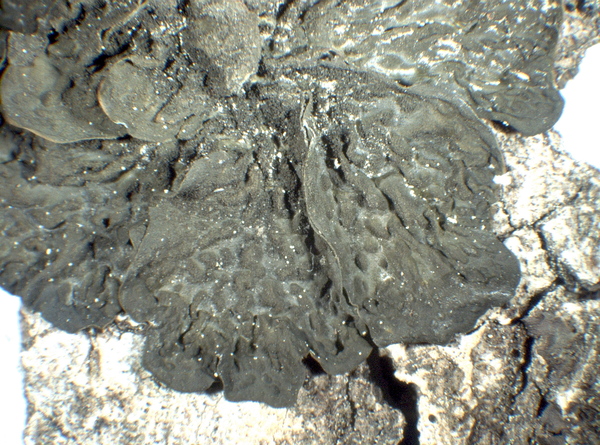

P.L.Nimis; Owner: Department of Life Sciences, University of Trieste
Herbarium: TSB (34178)
2008.03.06


P.L.Nimis; Owner: Department of Life Sciences, University of Trieste
Herbarium: TSB (34178)
2008.03.06
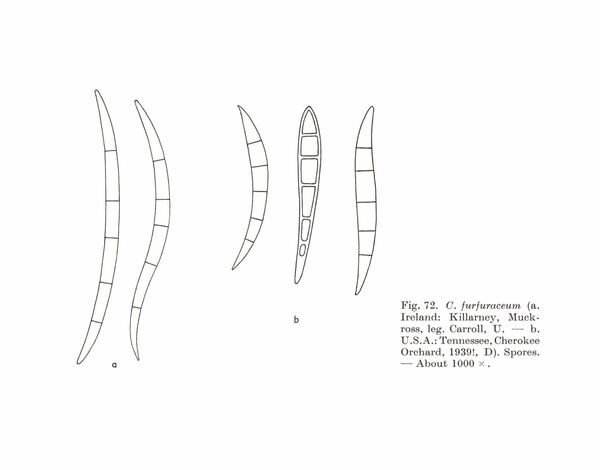
Degelius G. 1954. The lichen genus Collema in Europe: Morphology, Taxonomy, Ecology. Symbolae Bot. Upsal. 13, 2: 1-499.


P.L. Nimis; Owner: Department of Life Sciences, University of Trieste
Herbarium: TSB (16208)
2001/12/07
detail of isidia

Bernard Bouffinier - Source: http://www.lichensmaritimes.org/index.php?task=fiche&lichen=340&lang=en
France, Crozon
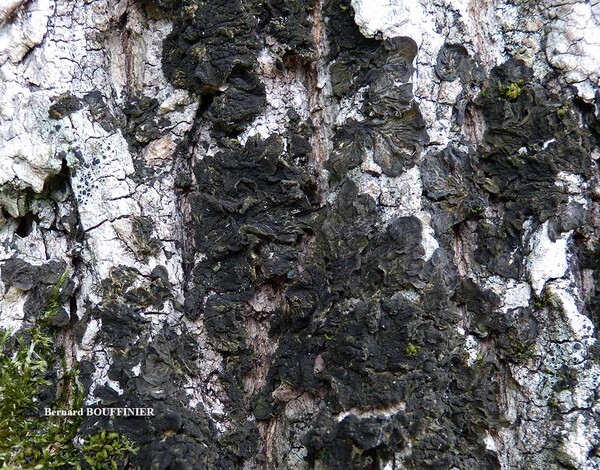
Bernard Bouffinier - Source: http://www.lichensmaritimes.org/index.php?task=fiche&lichen=340&lang=en
France, Chateaulin
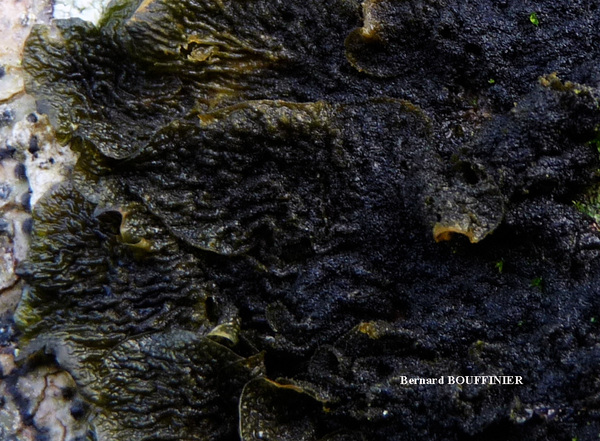
Bernard Bouffinier - Source: http://www.lichensmaritimes.org/index.php?task=fiche&lichen=340&lang=en
France, Crozon
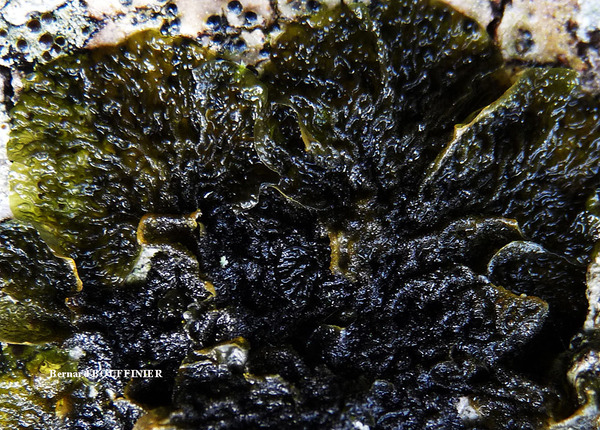
Bernard Bouffinier - Source: http://www.lichensmaritimes.org/index.php?task=fiche&lichen=340&lang=en
France, Crozon
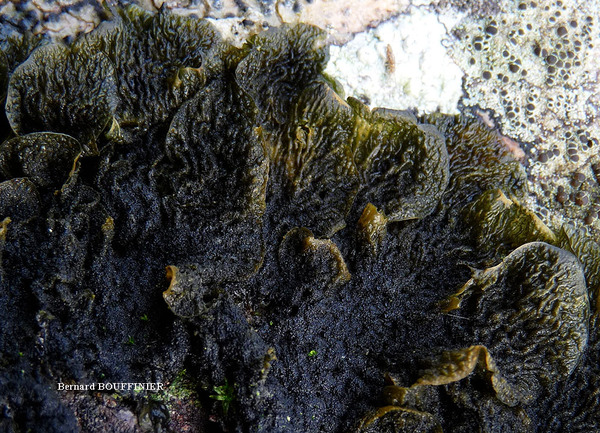
Bernard Bouffinier - Source: http://www.lichensmaritimes.org/index.php?task=fiche&lichen=340&lang=en
France, Crozon
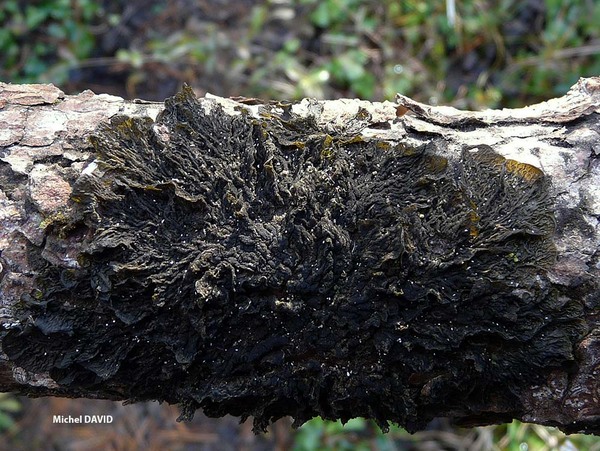
Michel David - Source: http://www.lichensmaritimes.org/index.php?task=fiche&lichen=340&lang=en
France, Lesteven
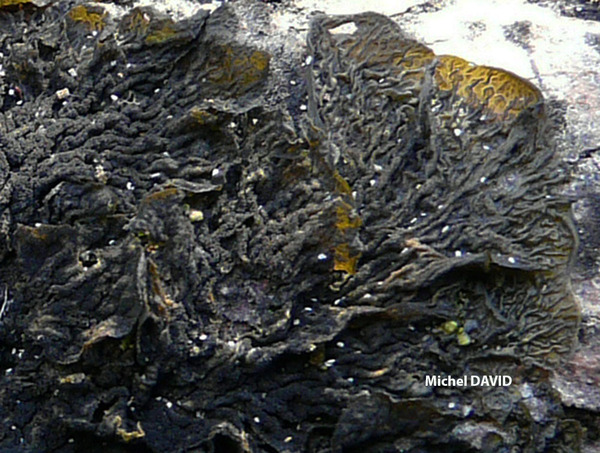
Michel David - Source: http://www.lichensmaritimes.org/index.php?task=fiche&lichen=340&lang=en
France, Lesteven
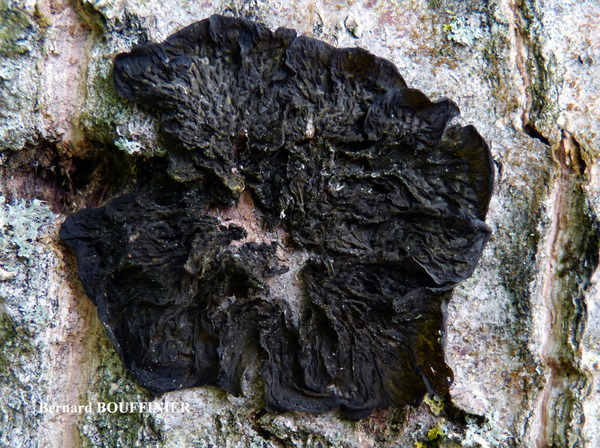
Bernard Bouffinier - Source: http://www.lichensmaritimes.org/index.php?task=fiche&lichen=340&lang=en
France, Chateaulin

Bernard Bouffinier - Source: http://www.lichensmaritimes.org/index.php?task=fiche&lichen=340&lang=en
France, Chateaulin
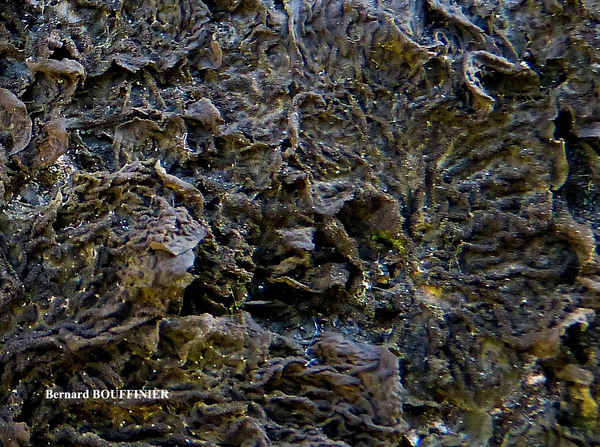
Bernard Bouffinier - Source: http://www.lichensmaritimes.org/index.php?task=fiche&lichen=340&lang=en
France, Quimerch


Felix Schumm - CC BY-SA 4.0
[ABL77734], Brazil, Mato Grosso do Sul, Morraria do Sul, Fazenda
Ouro Verde, in Atlantic rain forest on tree bark. 20°43’54'' S, 56°50’03''
W, 500 m. Leg. A. Aptroot (no 77734), 6.11.2018, det. A. Aptroot, 2019.
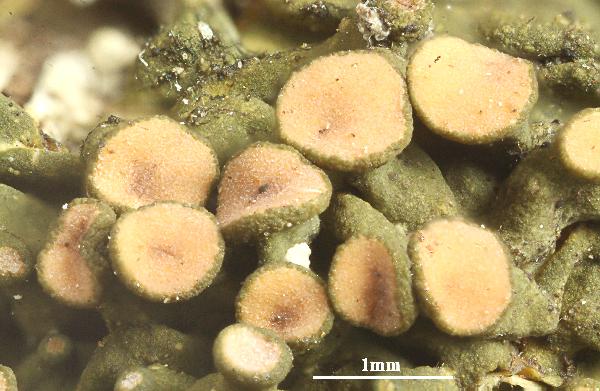

Felix Schumm - CC BY-SA 4.0
[ABL77734], Brazil, Mato Grosso do Sul, Morraria do Sul, Fazenda
Ouro Verde, in Atlantic rain forest on tree bark. 20°43’54'' S, 56°50’03''
W, 500 m. Leg. A. Aptroot (no 77734), 6.11.2018, det. A. Aptroot, 2019.
Growth form: Foliose, broad lobed
Substrata: bark
Photobiont: cyanobacteria, filamentous (e.g. Nostoc, Scytonema)
Reproductive strategy: mainly asexual, by isidia, or isidia-like structures (e.g. schizidia)
Most common in areas with a humid-warm climate (e.g. most of Tyrrenian Italy)
Commonnes-rarity: (info)
Alpine belt: absent
Subalpine belt: absent
Oromediterranean belt: absent
Montane belt: extremely rare
Submediterranean belt: extremely rare
Padanian area: absent
Humid submediterranean belt: very rare
Humid mediterranean belt: rather rare
Dry mediterranean belt: absent

Predictive model
| Herbarium samples |


P.L. Nimis; Owner: Department of Life Sciences, University of Trieste
Herbarium: TSB (8842)
2001/12/04


P.L.Nimis; Owner: Department of Life Sciences, University of Trieste
Herbarium: TSB (15168)
2008.03.06


P.L.Nimis; Owner: Department of Life Sciences, University of Trieste
Herbarium: TSB (15168)
2008.03.06


P.L.Nimis; Owner: Department of Life Sciences, University of Trieste
Herbarium: TSB (34178)
2008.03.06


P.L.Nimis; Owner: Department of Life Sciences, University of Trieste
Herbarium: TSB (34178)
2008.03.06

Degelius G. 1954. The lichen genus Collema in Europe: Morphology, Taxonomy, Ecology. Symbolae Bot. Upsal. 13, 2: 1-499.


P.L. Nimis; Owner: Department of Life Sciences, University of Trieste
Herbarium: TSB (16208)
2001/12/07
detail of isidia

Bernard Bouffinier - Source: http://www.lichensmaritimes.org/index.php?task=fiche&lichen=340&lang=en
France, Crozon

Bernard Bouffinier - Source: http://www.lichensmaritimes.org/index.php?task=fiche&lichen=340&lang=en
France, Chateaulin

Bernard Bouffinier - Source: http://www.lichensmaritimes.org/index.php?task=fiche&lichen=340&lang=en
France, Crozon

Bernard Bouffinier - Source: http://www.lichensmaritimes.org/index.php?task=fiche&lichen=340&lang=en
France, Crozon

Bernard Bouffinier - Source: http://www.lichensmaritimes.org/index.php?task=fiche&lichen=340&lang=en
France, Crozon

Michel David - Source: http://www.lichensmaritimes.org/index.php?task=fiche&lichen=340&lang=en
France, Lesteven

Michel David - Source: http://www.lichensmaritimes.org/index.php?task=fiche&lichen=340&lang=en
France, Lesteven

Bernard Bouffinier - Source: http://www.lichensmaritimes.org/index.php?task=fiche&lichen=340&lang=en
France, Chateaulin

Bernard Bouffinier - Source: http://www.lichensmaritimes.org/index.php?task=fiche&lichen=340&lang=en
France, Chateaulin

Bernard Bouffinier - Source: http://www.lichensmaritimes.org/index.php?task=fiche&lichen=340&lang=en
France, Quimerch


Felix Schumm - CC BY-SA 4.0
[ABL77734], Brazil, Mato Grosso do Sul, Morraria do Sul, Fazenda Ouro Verde, in Atlantic rain forest on tree bark. 20°43’54'' S, 56°50’03'' W, 500 m. Leg. A. Aptroot (no 77734), 6.11.2018, det. A. Aptroot, 2019.


 INDEX FUNGORUM
INDEX FUNGORUM
 GBIF
GBIF
 DOLICHENS
DOLICHENS
